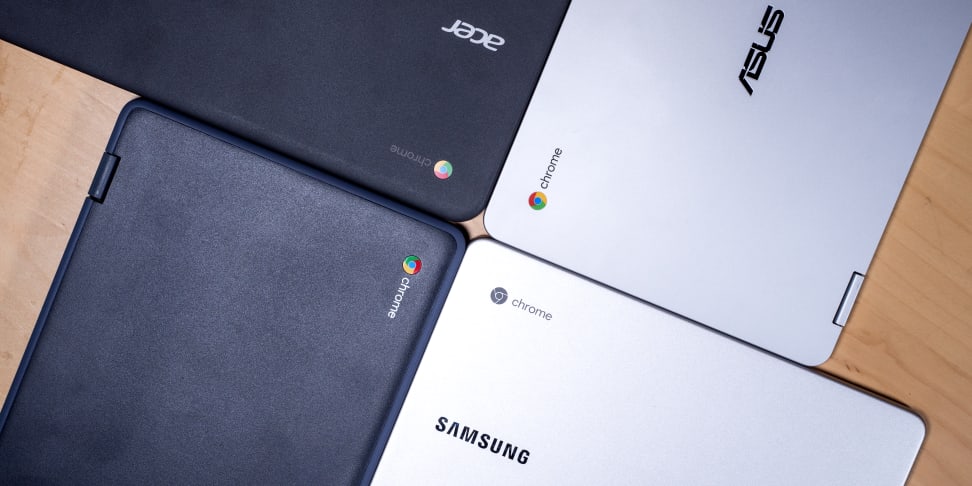 — Recommendations are independently chosen by Reviewed’s editors. Purchases you make through our links may earn us a commission.
— Recommendations are independently chosen by Reviewed’s editors. Purchases you make through our links may earn us a commission.Whether you're a wide-eyed college freshman or a worldly senior, you're going to need a decent laptop to get you through school. But given the ludicrous cost of tuition these days, most students are left with little expendable income. Luckily, there are more options than ever before. Google Chromebooks, known for their low prices and long battery life, are really taking the budget laptop scene by storm.
Chromebooks stand as an affordable option for college students, costing anywhere from $200 to $600 (with the exception of the Google Pixelbook) , but are they worth the money? If you spend most of your time browsing the web, scrolling through Facebook and the like, then yes. These cheap machines like these are ideal for light usage, which is why they've made such a dent in the education market. They're also at lower risk for security issues because they exclusively run web-based applications.
If you just want to know which one's the best, it's the Google Pixelbook. It boasts nine hours of battery life, a lightweight form factor, a sophisticated design, and speedy performance—basically, it checks all the right boxes. However, we went hands-on with a slew of Chromebooks: from traditional 'books to versatile 2-in-1's, we checked performance, build quality, and everything else. Between the speedy performance and premium look, the Google Pixelbook (available at Amazon for $694.99) ended up nabbing our top spot. Not your cup of tea? Don't worry. Everything on this list has something to offer buyers.
These are the best Chromebooks we tested ranked, in order:
- Google Pixelbook (2017, Intel Core i7)
- Lenovo Yoga Chromebook C630 81JX0001UX
- Asus Chromebook Flip C434TA-DSM4T
- Acer Chromebook Spin 13 CP713-1WN-53NF
- Google Pixel Slate (Intel Core i5, 8GB RAM, 128GB)
- HP Chromebook X2 12-F014DX
- Dell Chromebook 11 3180 83C80
- Asus Chromebook Flip C302CA
- Acer Chromebook 11 N7 C731T-C42N
- Samsung Chromebook Plus
- Lenovo Flex 11 Chromebook
- Dell Chromebook 3189 2-in-1 (4GB RAM, 32GB Storage)
- Acer Chromebook 11 CB311-8H-C5DV
- Acer Chromebook 15 (CB515-1HT-P39B)
- Acer Chromebook Spin 11 (CP311-1HN-C2DV)
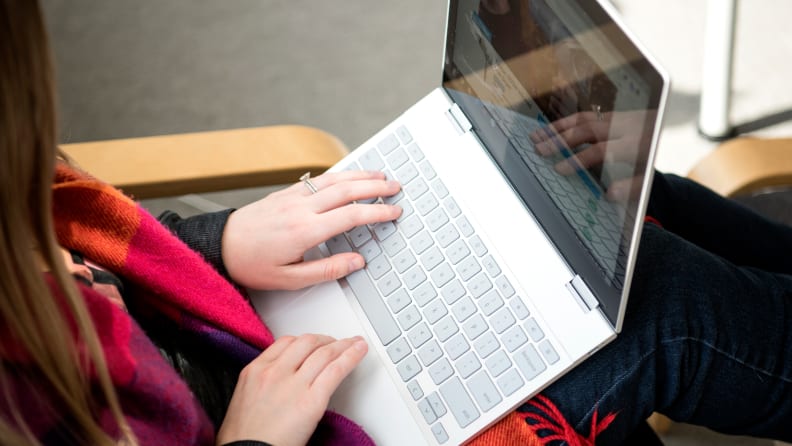

The Pixelbook falls under the umbrella of premium Chromebooks. If you've got a taste for the future, the Google Pixelbook is about as futuristic as Chromebooks get. With its top-notch hardware, versatile 2-in-1 design, touchscreen support, and long battery life, this high-end Chromebook has a lot to offer.
The keyboard is an absolute dream to type on, too. The keys are well-spaced and typing is clicky and pleasant. But while we love the full Android support and glass touchpad, there were still a couple of nitpicks we had to grapple with.
The pen is sold separately, which stinks because that's another cost. It's also very expensive for a Chromebook. The entry-level model alone will cost you less than a grand, which is almost double the price of the Asus Chromebook Flip. Drawbacks aside, if you've got the funds, this is the best Chromebook we've ever tested.
How We Tested
The Tester
I’m Ashley Barry-Biancuzzo, the former laptop reviewer here at Reviewed and an editor of our Best Right Now buying guides. Not only am I a huge fan of Chromebooks, but I also use one as my everyday laptop. They’re great because they’re largely virus-free and have fantastic battery life.
The Tests
Our tests for these devices aren’t based purely on processing power. Instead, we look at the overall usability of the laptop, which also depends on the quality of the screen, the keyboard, what interfaces it offers and many other factors. We test all of these factors and assign a score for each. Then, we rate the overall usability of the laptop as a combination of all of these factors by creating an overall weighted score.
First, we look at how well each laptop performs. Because the laptops in this guide are mostly designed for running web applications like Google Docs, we use two web benchmarks: Basemark and Speedometer. These test the processing power of the laptop in a web browser: for all of them, we used Google Chrome.
Most laptop displays do well in a dark room, but what about outdoors? Is a glossy screen better than a matte one? To figure out this information, we test the brightness on the display. We do this with a CS-200: it’s a handheld device that measures luminance. We measure the white levels and black levels at max brightness and then again at 50% brightness.
Next, we tested the battery life of each laptop to see how long you can use them for between charges. With their displays adjusted to a brightness of 200 nits, we set them to continuously cycle through popular websites, simulating the way you would use the laptop when idly browsing the web. We also look at how comfortable the screen is to look at, how easy the keyboard is to type on, and other factors.
What is a Chromebook?
Running Chrome OS (aka Google's default browser), Chromebooks are inexpensive and largely virus-free, a great option for college students. Equipped with low-power processors, Chromebooks typically have good battery life and are fanless. That said, they’re not the most powerful laptops in the world. They can only handle everyday tasks like browsing the web, checking e-mail, and watching Netflix.
Display Size
13-inch laptops: These smaller laptops are great for carrying around, and more than suitable for light work like writing papers and browsing the web.
15-inch laptops: Mid-sized laptops are a bit less portable, and won’t necessarily work in space-constrained spaces like airplane seats. But the larger display is useful for photo editing and watching videos.
17-inch laptops: This is very large, and only recommended if you are doing video editing or other intensive work that requires a lot of screen real estate—and you don’t mind lugging it around.
There can still be varying sizes within those categories—for example, the XPS 13’s smaller bezels make it much smaller than most 13-inch laptops—and sizes in between, like the 14-inch Lenovo Yoga C930. But in general, picking a size range you’re comfortable with can help narrow down the field.
You’ll also want to consider how many USB ports the laptop has, whether you need HDMI and Ethernet, and how comfortable the keyboard and trackpad are to use—this can vary quite a bit from model to model, and it’s important to get something responsive and durable. Touch displays are generally reserved for more premium products.
Operating System
Windows is still the dominant OS these days, and if you’re going to play games, edit photos and videos, or need certain software for work, you’ll probably stick with Microsoft’s offering. If you spend all your time on the web, though, a Chromebook may serve you better than you’d think—between Netflix, Gmail, Google Docs, and even online photo editors like Pixlr, you can do almost anything in a browser, and many of those web apps even work offline for those rare occasions you don’t have Wi-Fi. Chromebooks have the advantage of being cheaper (since they don’t need as much processing power) and virtually virus-free (since they run Linux under the hood).
Under the Hood
Finally, you’ll need to consider the guts—the processor, graphics chip, RAM, and storage that determine your laptop’s capabilities. For browsing the web and using office software, lower-power chips like Intel’s i3 and i5 are more than adequate. 4GB of RAM is usable in a Chromebook, though even web browsing can eat up RAM these days, so 8GB is recommended if you tend to open lots of tabs, use lots of browser extensions, and want a laptop that’ll last you well into the future—I wouldn’t generally advise 4GB for most Windows laptops these days.
Other Chromebooks We Tested
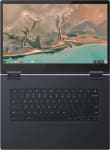
If you’re looking for speedy performance, look no further than the Lenovo Yoga Chromebook. Even with 22 tabs open in Google Chrome (I’m an agent of chaos), I experienced zero lag. It’s a good machine for multitasking or watching live Twitch streams. The 4K display is fantastic, too. When I watched the trailer for Star Wars: Rise of Skywalker, the orange sand dunes of Jakku really popped off of the screen.
Unfortunately, when we ran our primary battery test, which cycles through popular websites on a continuous loop (the idea is to simulate everyday use), the Yoga died in about six hours. That’s a little less than your average workday. Though it’s not the worst result we’ve ever seen, it’s unimpressive for a Chromebook. The mediocre battery life may have something to do with the Yoga’s 4K display, as I imagine it’s a huge power-suck.


If you’re a young professional, you should definitely check out the latest version of the Asus Chromebook Flip. Its performance is good enough for everyday tasks like surfing the web and checking email, and its bezels are practically nonexistent (this means you’re getting a ton of screen). But what I like best is the sophisticated design. With its aluminum finish and chrome trim, the C434T looks and feels like a premium product (minus the premium price tag). It’s one of the most elegant-looking Chromebooks we’ve seen in a while.
The only thing that tripped me up was the trackpad. It’s not as responsive as a MacBook touchpad, and it took me some time to adjust to it. I wouldn’t say it’s a deal-breaker, per se, it’s just something to be aware of.
Pros
-
Excellent battery life
-
A beautiful display and keyboard
-
Affordable price point
Cons
-
More expensive than most Chromebooks
-
Doesn't run full Windows or Mac apps
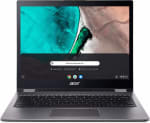
The Chromebook Spin 13 is a great option for the college student, as it’s budget-friendly and has a wide selection of ports (which eliminates the need for an adapter). We also like that the stylus is included and that you can store it inside a little compartment in the laptop’s shell. What surprised us most about this laptop was its tall display, as I expected it to be awkward to handle. Fortunately, the hinges are tight and strong so the screen didn’t wobble at all.
Though we adore this laptop, there are some trade-offs. When we put the Spin through our battery test, which cycles through websites like Twitch and Amazon, it died in about five hours. Additionally, the laptop itself feels pretty bulky. Weighing a little over three pounds. That said, it’s definitely durable. There’s hardly any flex to the display and the keyboard didn’t creak when I pushed down on it with both hands.
If you’re always-on-the-go, the Pixel Slate is a good option. Weighing a little over a pound, the Slate is super lightweight. Its gorgeous display is great for Netflix binges, while its powerful internals makes it easy to work on multiple projects at once. You can also use it as a tablet or prop it up like an easel with the Pixelbook Keyboard.
The only downside is its high price tag. Its least expensive configuration cost about a grand, so it might not be a good fit for someone on a tight budget. In addition to its costly starting price, you have to pay extra for the Pixelbook Keyboard and Pixelbook Pen, as they’re considered standalone accessories.
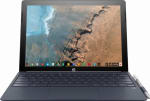
If you’re looking for a Chromebook that also happens to be a tablet, the HP Chromebook x2 is a great choice. Between the long battery life, convertible design, and vibrant display, there’s a lot we love. My only complaint is that it’s a little heavy/bulky for a convertible and it’s not the fastest Chromebook we’ve ever tested. That said, if you’re only checking e-mail or watching streaming services, performance shouldn’t be much of an issue.
We really like that the keyboard and stylus are included. This is a nice perk because they tend to cost a pretty penny as standalone accessories. It’s more lap-friendly too, meaning it didn’t wobble quite as much as other convertibles we’ve tested. Plus, the color scheme is sharp as hell. It really looks a lot like the Google Pixelbook, but that’s perfectly fine, as imitation is considered the highest form of flattery.

The 11-inch Dell Chromebook is probably the most budget-friendly option on this list. The base configuration, which costs less than our target price, gets you 4GB of RAM and a Celeron N3060 processor. For $150 more, you can upgrade to a touchscreen and 32GB of storage.
The rugged design is really cool, as it's built to handle the daily abuses of life. The black plastic exterior hides fingerprint smudges and the rubber bumper along the edges of the Chromebook protect against unexpected falls.
It may not be the most powerful machine, but it's a great little laptop for writing papers and browsing the web. It's also really small and compact, making it the perfect travel companion. If you're a college student on a tight budget, you can't really get much better than this.
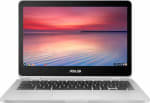

This Asus is one swanky-looking Chromebook. Between the thin profile and silver shell, it looks suspiciously like the MacBook. I mean, isn't imitation the highest form of flattery? The posh design is cool and all, but let's discuss the guts.
The Flip earned a score of 367.79 in Basemark, which is a web-based application that evaluates performance. That's serious power. We weren't too surprised by that result, though. Our review unit had an Intel Core m3-6Y30 processor and 4GB RAM, a step-up from the usual Chromebook fare. We also discovered that the machine can handle up to fifteen open tabs at once. Multitaskers, get in line.
The superb 1080p display deserves its own call-out, too. It provides really crisp images. When I watched gameplay footage for The Legend of Zelda: Breath of the Wild, the rolling hills of Hyrule were so vividly green. The colors are rich and lovely, and I wasn't disappointed.
The only downside is the cost, as it's well above our target price. Most Chromebooks fall in the range of $199-$250, with $300 being the sweet spot. If you're able to shell out the money, I'd spring for it. Chromebooks are evolving faster than ever, especially this new wave of 2-in-1's.

If you're a bonafide klutz (like me), this durable Acer might be the laptop for you. I can't tell you how many times I've doused my keyboard in tea or water over the years, and if I'd had this one, it wouldn't have been an issue. This Acer delivers a military-grade chassis and unique "gutter" system, so it's pretty tough. Between the durable shell and water resistance, it's basically klutz-proof.
Acer's gutter system drains spilled fluids out of the bottom of the Chromebook, so naturally, I had to try it out. I'm not sure what I expected, but this Acer continued to function after I purposefully dumped water onto the keyboard.
But what surprised us most was the fantastic battery life. When we put this Acer through our browsing test—which continuously cycles through popular websites like Twitch and Facebook—it lasted a total of eight hours. That's more than a full school day.
The Acer had a couple of drawbacks, though. It doesn't run Android apps, meaning you're at the mercy of the Google gods. In other words, you're missing out on a whole lot of games and utilities.
The other drawback was the poor performance. It's snappy enough when viewing videos or chatting in Slack, but it struggles with more than seven open tabs. So, if you're the type of person who likes to multitask, you might want to keep tabs on your tabs. Still, it's a good laptop for the low price, especially for an accident-prone middle school student.
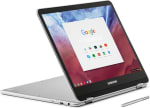
Like the Asus Chromebook Flip, this 2-in-1 has an eye-catching design. Unlike most Chromebooks, which are pretty nondescript, this one has a bit of flair to it. Made of magnesium alloy, it looks and feels like a premium machine, and the monochrome Google Chrome logo really pops against the silver lid. The body is also sleek and lightweight but has a little give.
The 1600p display is top-notch, too. When I watched the Ready Player One trailer, the deep purples of the fantastical worlds inside OASIS, a virtual reality video game, were sharp and vivid. There's a glossy finish, though, so you're going to be dealing with some reflection in brighter environments. The reflection is especially noticeable when the Samsung is in tablet mode.
The battery life was disappointing, but not surprising, as the high-resolution touchscreen display is a big power suck. The Samsung fizzled out in about five hours, which is below-average for a Chromebook. You're going to want to keep the power adapter nearby.
For a Chromebook, the Samsung is expensive. You're getting an excellent display, but the price is a little steep. If you're working with a flexible budget and plan on using the machine for casual use, I'd say go for it.

There's no point in beating around the bush here. The Lenovo Flex is one ugly machine. It has the modern 2-in-1 design, which is nice, but it looks like one of those bulky business laptops from the early 2000s. Between the ultra-thick bezels and dark grey exterior, it's super plain. But Chromebooks aren't known for their beautiful designs, and at least it's plenty rugged.
Like the Acer, this Lenovo has a spill-resistant keyboard/trackpad; overall, it's very durable. There's a 5 mm rubber ring surrounding the machine, protecting it from unexpected bumps and shocks. So, ideally, this laptop should survive all but the most severe tantrums. There's a trade-off for all that protection, though: For an 11-inch Chromebook, this Lenovo is seriously bulky. I didn't mind lugging it about, but hauling a three-pound Chromebook every day isn't really ideal, either.

The Dell is another unassuming-looking 2-in-1 that bends back into tablet and tent modes. While it's not the lightest or most attractive Chromebook we've seen, it's sturdy enough for K-12 education environments. The plastic lid is scratch-resistant, the keyboard is sealed against fluids, and the rounded edges are rubberized. The design is a bit utilitarian, but that seems to be the norm for Chromebooks.
The full-sized keyboard offers a great typing experience. Most Chromebook keyboards feel tiny and cramped, but not the Dell. The keys feel firm under my fingertips and there's plenty of space between them. I didn't notice any creaking of the chassis either, so it appears to be well-built. I clicked my way to 76 words per minute, too, which is close to my average of 80 (wpm).
It's not the kind of machine that screams luxury. It's the kind of machine that favors practicality over luxury. This Dell might be a good laptop for a college student on a budget.


With its gorgeous color scheme, snappy performance, and low price point, this Acer really stands apart from the crowd. The diverse selection of ports is awesome, too. Not only are you getting both USB-A and USB-C ports, but they're also all 3.1, meaning faster transfer speeds.
But the real star of the show here is the battery life. In our testing, the Acer breathed its last breath in a little over eight hours, which is more than a full workday. While we like the lightweight form factor and rugged design, it's not a perfect product.
The matte display is dimmer than we like. It tops out at 228 nits at max brightness, which isn't very bright by modern standards. The audio quality is also underwhelming. Lower tones aren't as punchy as they are on other laptops.
If you can live with these trade-offs, it's a good option for the budget-conscious buyer.

When it comes to the Chromebook 15, you're getting a lot of bang for your buck. The aluminum and plastic build feels surprisingly sturdy and there's hardly any flex in the chassis or display. It's also plenty fast for basic tasks like surfing the web or checking e-mail.
Weighing just a little under five pounds, it's definitely on the heavy side. However, that's not too surprising, given its super-size screen. Speaking of the screen, it's not the brightest or most colorful we've ever seen, but it's 1080p and that's pretty rare on a Chromebook.
It's not great for multitasking, either. Our test unit had 4GB of RAM and that wasn't enough to keep up with my usual workload. If you have more than seven tabs open, you can expect things to get sluggish. We'd recommend starting with at least 8GB of RAM.
If playing media isn't a priority, this Acer is perfect for the average user.

This sleek convertible has a lot of cool features. Thanks to the 360-degree hinge, you can swing the screen around and use it as a tablet or prop it up like a painter's easel. The included stylus is nice as well, especially if you're big on doodling.
The most surprising thing about this tiny laptop is how durable it is. Between the rubberized bumper around the bottom and the polycarbonate plastic, it's basically klutz-proof. The touchscreen is also coated in Corning Gorilla Glass, which protects it against scratches.
The only drawback is that the screen is really small. It's not the best screen for watching streaming services on, but the picture quality is still acceptable. If you're looking for a super rugged machine, you can't get much better than this.
